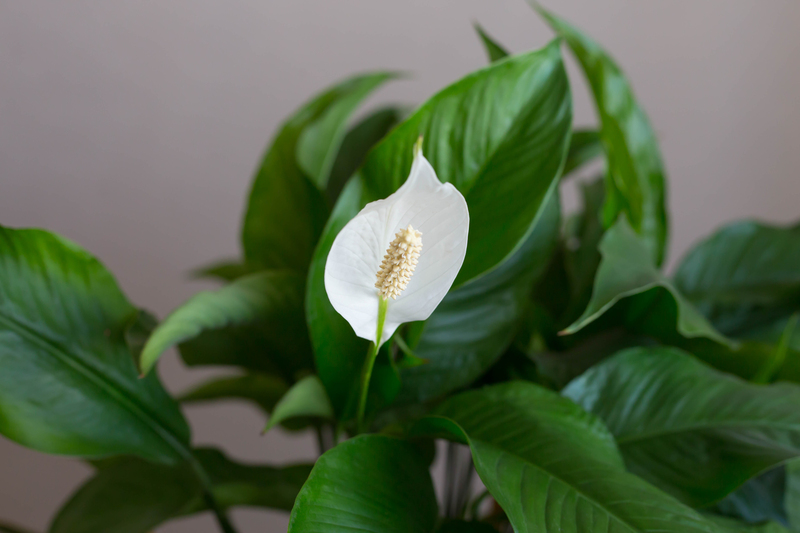Elevate Your Outdoors with Zen Garden Tranquility
Posted on 23/08/2025
Elevate Your Outdoors with Zen Garden Tranquility
In today's fast-paced world, more homeowners are yearning for a calm and serene sanctuary within their living space. Transforming your backyard into a peaceful oasis has become a popular trend, and nothing captures the spirit of serenity quite like a Zen garden. This comprehensive guide explores how to elevate your outdoor areas with Zen garden tranquility, offering inspiration, practical tips, and expert insights into creating the perfect outdoor retreat.
Understanding the Beauty and Purpose of Zen Gardens
Zen gardens, also known as Karesansui or Japanese rock gardens, are rooted deep within Japanese culture. Their design is based on simplicity, minimalism, and a profound connection to nature. Traditionally, these gardens are meant to emulate the tranquility found in nature and are crafted to offer a meditative environment. Incorporating Zen garden tranquility into your yard goes beyond visual beauty--it boosts mental well-being and creates a harmonious outdoor refuge.
- Minimalist Design: Focuses on clean lines and uncluttered spaces.
- Natural Elements: Uses rocks, sand, pebbles, and carefully selected plants.
- Meditative Space: Designed to foster contemplation and inner peace.

Why Bring Zen Tranquility Into Your Outdoor Space?
There are numerous benefits to channeling Zen garden tranquility in your outdoor areas:
- Reduces Stress: The calming aesthetics and intentional layout help ease anxiety and clear the mind.
- Encourages Mindfulness: The act of designing, maintaining, and even strolling through a Zen garden fosters mindfulness and meditation.
- Enhances Curb Appeal: A beautifully orchestrated Zen landscape instantly elevates your home's exterior, making it more attractive and inviting.
- Promotes Environmental Harmony: The use of natural materials and eco-friendly plants nurtures local wildlife while conserving water.
Zen Garden Design Elements: The Building Blocks of Peace
To achieve Zen garden tranquility outdoors, it's helpful to understand the core elements that create this magical ambiance. These elements not only beautify your landscape but also serve philosophical purposes.
1. Rocks and Stones: Symbolic Foundations
Rocks are the backbone of any authentic Zen garden. They symbolize mountains, islands, or animals, serving as focal points for contemplation. Arrange boulders in odd numbers and asymmetrical formations for natural harmony. Combine various textures and sizes for visual interest while maintaining balance.
2. Gravel and Sand: The Element of Flow
Fine gravel or sand represents water or clouds in Zen mythology. Rake it into rhythmic, swirling patterns to mimic the flow of rivers or the quiet rippling of a pond. This act of raking is a meditative process, deepening your connection with nature.
3. Plants and Greenery: Life Among Stillness
While traditional Zen gardens are sparse with color, carefully chosen Japanese maples, bamboo, moss, and evergreens add subtle texture and a sense of enduring tranquility. Opt for low-maintenance, native plants that thrive with minimal intervention.
4. Water Features: Reflective and Soothing
Ponds, miniature streams, or stone basins amplify peacefulness and offer a gentle soundtrack to your outdoor haven. Even a simple birdbath or a small bamboo fountain can dramatically enhance the sense of Zen tranquility.
5. Bridges and Pathways: Symbolic Journey
Arched bridges, winding gravel paths, and stepping stones invite wandering and quiet reflection. Create walkways with natural materials, guiding guests through your outdoor Zen sanctuary.
6. Ornaments and Accents: Understated Beauty
Japanese lanterns, stone sculptures, and bamboo gates offer subtle focal points that complement nature's elegance. Remember, less is more--each piece should have meaning and blend organically into the landscape.
Step-by-Step: Creating Your Own Zen Garden Sanctuary
Ready to elevate your backyard with Zen tranquility? Here's a step-by-step plan for crafting your personal outdoor retreat.
-
Choose the Right Location
- Pick a space that is quiet, receives gentle sunlight, and is away from high-traffic zones.
- A corner of your backyard, a side yard, or even a rooftop works perfectly.
-
Sketch Your Design
- Plan for asymmetry and balance. Think about the flow of energy and how you want people to move through the space.
- Include key elements such as rock groups, sand/gravel areas, and subtle plantings.
-
Prepare the Ground
- Clear the area of debris and weeds.
- Lay down a weed barrier and top it with sand or gravel to establish your base layer.
-
Arrange Rocks and Stones
- Place large stones first. Use them as symbolic mountains or islands.
- Cluster smaller rocks naturally for added interest.
-
Add Sand or Gravel
- Spread an even layer of sand/gravel around the rocks.
- Use a rake to create flowing, meditative patterns.
-
Incorporate Plants
- Opt for slow-growing evergreen shrubs, moss, or delicate ferns around the periphery.
- Group plants in odd numbers for a natural, harmonious look.
-
Install Water Features (Optional)
- A small pond, bamboo fountain, or water basin adds movement and sound.
- Ensure the feature is understated and integrates seamlessly with other elements.
-
Add Finishing Touches
- Position a stone lantern, Buddha statue, or bamboo gate as a subtle accent.
- Keep accessories to a minimum to preserve the peaceful ambience.
Enhancing Outdoor Zen Garden Tranquility
Lighting for Mood and Nighttime Peace
Evening hours offer a unique opportunity to experience your Zen sanctuary. Soft, indirect lighting--such as solar path lights or low-voltage spotlights--emphasizes rocks, pathways, and specimen plants. Paper lanterns or warm LED lights add a subtle glow without disrupting the natural vibe.
Sound Elements: The Music of Stillness
Incorporate soothing sounds to enhance the meditative atmosphere:
- Bamboo wind chimes for gentle tinkling in the breeze.
- Trickling water features to mask distant city noises.
- Birdsong encouraged by native shrubs and small feeders.
Zen Seating: Comfort in Contemplation
Add a low wooden bench, a natural stone seat, or a simple meditation cushion under a shade tree. Position seating where guests can appreciate the gentle patterns of sand and the quiet beauty of your garden's highlights.
Maintaining Your Zen Garden: A Path to Mindful Living
Upkeep for a tranquil Zen garden is simple yet meaningful, fostering connection with nature and awareness of the present moment:
- Raking Patterns: Refresh the sand or gravel designs regularly. The repetitive action is soothing and meditative.
- Trimming Plants: Prune shrubs and trees to preserve graceful shapes and avoid clutter.
- Caring for Water Features: Clean ponds and refill fountains to maintain sparkling clarity.
- Cleaning Debris: Remove fallen leaves and twigs to keep surfaces pristine and inviting.
Regular care becomes a mindfulness ritual, reinforcing your connection to the garden and promoting a deeper sense of Zen tranquility in daily life.
Zen Gardens for Small Yards and Balconies
No expansive yard? Don't worry--you can still elevate your outdoors with miniature Zen gardens on patios or balconies.
- Tabletop Zen Gardens: Use a shallow tray with sand, pebbles, and small rocks to create a portable oasis.
- Potted Bamboo or Bonsai: Arrange minimalist plantings in containers for a natural, space-efficient look.
- Miniature Water Bowls: A small bowl with floating flowers or river stones adds tranquility to even the most compact area.
Expert Tips for Lasting Zen Garden Tranquility
- Prioritize Simplicity: Resist the urge to over-decorate. Zen is about what you omit to emphasize what matters.
- Choose Weather-Resistant Materials: Select rocks, gravel, and plants suitable for your local climate for low maintenance.
- Blend with Existing Landscape: Integrate your Zen garden naturally with surrounding features for cohesive flow.
- Observe Seasonal Changes: Pay attention to how shadows, light, and plant textures shift with the seasons to keep the garden engaging year-round.
- Personalize Your Space: Infuse the space with meaningful elements--favorite stones, cherished plants, or mementos that encourage reflection.

Frequently Asked Questions About Zen Garden Tranquility
1. What makes a Zen garden tranquil?
True Zen tranquility is achieved through balance, simplicity, and an intentional connection to nature. Every element--rocks, sand, plants, and water--is arranged to invite contemplation and lull the senses.
2. How much does it cost to build a Zen garden?
The cost ranges from a few hundred dollars for a DIY project with local materials to several thousand for larger or professionally designed spaces. Start small and expand as your vision grows.
3. Is a Zen garden hard to maintain?
Zen gardens require minimal care. Regular raking, occasional pruning, and debris removal are typically all that's needed--a manageable routine that doubles as mindfulness practice.
4. Can I adapt Zen elements to a modern yard?
Absolutely! Modern Zen gardens blend tradition and innovation, incorporating clean lines, sculptural plants, and new materials while maintaining a sense of calm and simplicity.
Conclusion: Elevate Your Outdoors with Lasting Zen Tranquility
Your journey to cultivating Zen garden tranquility can transform any outdoor space into a haven of peace and inspiration. By carefully selecting elements that align with nature and purpose, you'll not only boost your home's aesthetic but also nourish your soul. Whether you're embarking on a complete landscape overhaul or introducing small Zen-inspired touches, every effort brings you closer to daily moments of clarity and peace.
Unleash the transformative power of Zen garden tranquility in your own backyard, and experience the fulfillment of outdoor spaces that soothe, inspire, and rejuvenate every day.

